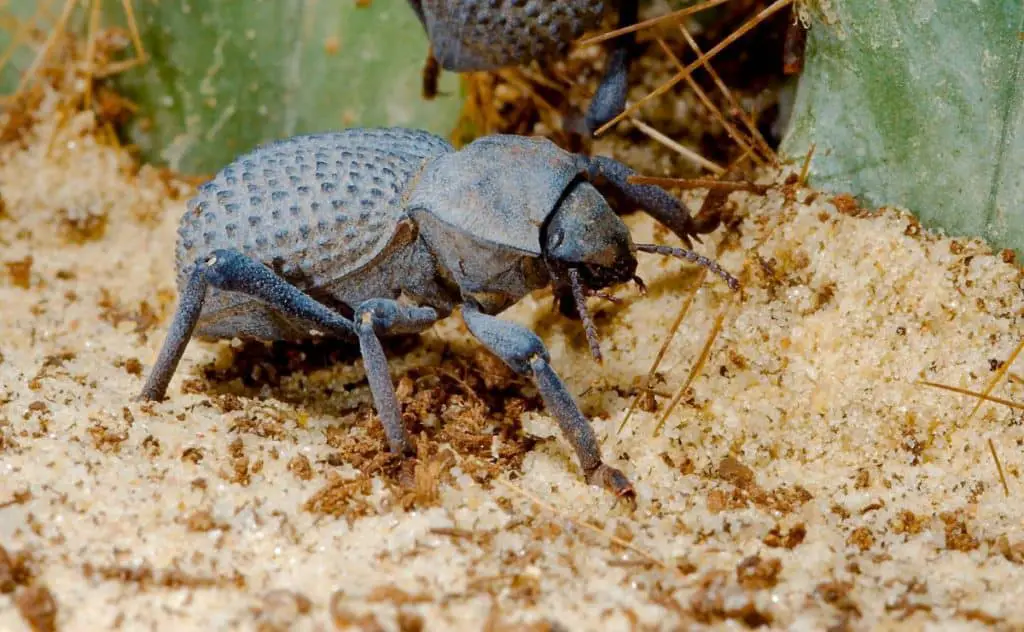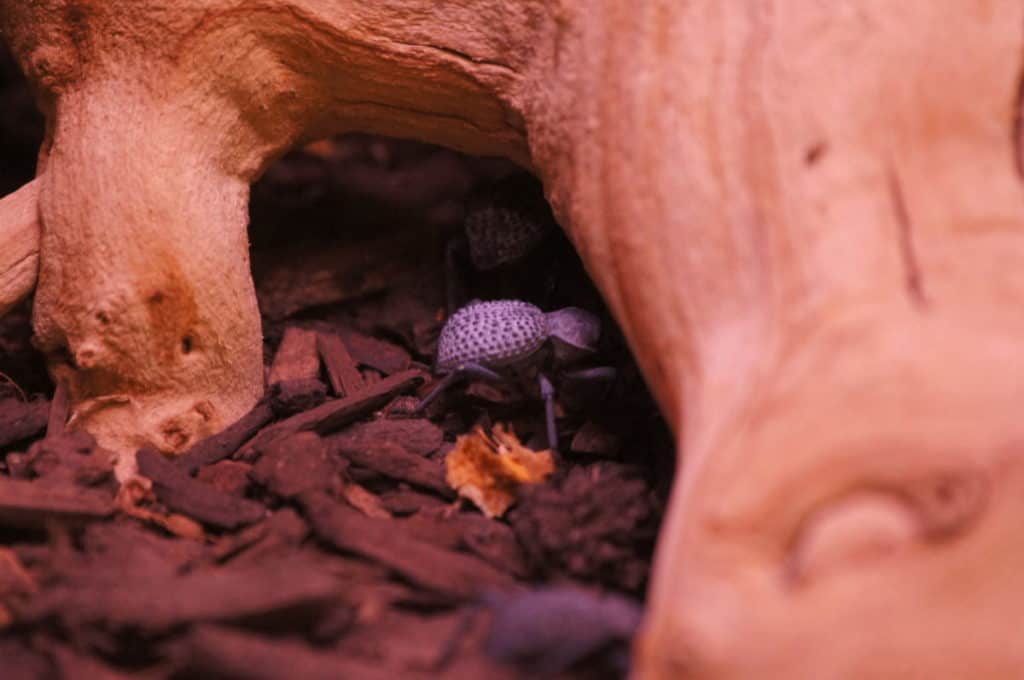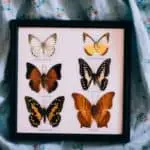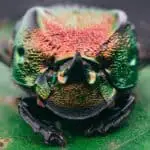If you’re on the hunt for a unique, low-maintenance pet that’s perfect for beginners, the blue death feigning beetle might just be your match made in insect heaven. These hardy little critters don’t bite, require minimal care, and live longer than most other beetles (up to 8 years or more!). Oh, and did I mention their hilarious habit of playing dead when threatened? They’re equal parts fascinating and fun.
- What Makes Blue Death Feigning Beetles Perfect Pets?
- Getting Started: Where and How to Get Your First Beetle
- Setting Up the Perfect Home for Your Beetle
- Feeding Time: What’s on the Menu?
- Lighting, Temperature, and Humidity: Making Your Beetle Feel at Home
- Breeding Blue Death Feigning Beetles: A Step-by-Step Guide
- Handling Your Beetles: Building Trust with Your Tiny Drama Queens
- Why Is My Blue Beetle Turning Black?
- Can Blue Death Feigning Beetles Live with Other Pets?
- Recommended Supplies for Happy, Healthy Beetles
What Makes Blue Death Feigning Beetles Perfect Pets?

Small, Simple, and Stunningly Blue
Blue death feigning beetles are compact little wonders, measuring just 0.5 to 1 inch in length. Their signature dusty blue color isn’t just for show—it’s a waxy coating that protects them from the harsh desert sun. They’re perfectly designed for survival and cuteness, making them an eye-catching addition to any home terrarium.
A Drama Queen’s Defense: The Art of Playing Dead
When threatened, these beetles pull off the ultimate act—they flop over and pretend to be dead. It’s an Oscar-worthy performance that confuses predators like desert tarantulas, who prefer their prey alive and kicking. Even their stillness helps, as tarantulas rely on vibrations to detect movement. Talk about next-level acting skills!
These Beetles Outlive Other Pet Insects
Most beetles live for just a few months, but the blue death feigning beetle laughs in the face of such short lifespans. Thanks to their desert adaptations, these beetles can thrive in captivity for up to a decade with proper care. That’s a long-term commitment you can feel good about.
Getting Started: Where and How to Get Your First Beetle
Finding Blue Death Feigning Beetles: Local vs. Online Options
Depending on where you live, finding these beetles might take a bit of effort. If you’re in the Southwestern United States, local pet stores or insect expos may have them in stock. For everyone else, online stores and even Amazon are great options (hello, affiliate link!). Just make sure to check the seller’s reputation and reviews to ensure your beetles arrive safely.
Why Adults Are Better Than Grubs for Beginners
While it might be tempting to start with a grub and watch it grow, adult beetles are the way to go for beginners. They’re inexpensive, ready to thrive, and don’t require the precise conditions needed for pupation. Grubs, on the other hand, need controlled humidity and temperature—unless you’re ready to invest in an incubator, stick with the adults.
Pro Tip: Save Time and Money with Pre-Matured Beetles
Adults skip the finicky growth stages and get straight to the good stuff—exploring their enclosure, munching on snacks, and charming their new owner. Plus, they’re already hardy and accustomed to life in captivity. Talk about a win-win.
Setting Up the Perfect Home for Your Beetle

Housing Basics: Sand, Space, and Hiding Spots
A simple fish tank or plastic container will do the trick for your blue death feigning beetle’s home. Aim for at least a 1-gallon container per two beetles, and fill it with 2-3 inches of dry sand as a base. Beetles love to roam, so giving them plenty of space to explore is always a plus.
Decor Ideas: Rocks, Cactus Skeletons, and More
To make your beetle’s environment more exciting, add natural decor like rocks, twigs, or cactus skeletons. Not only do these provide hiding and climbing spots, but they also mimic the beetle’s natural desert habitat. If you’re housing multiple beetles, include plenty of decor to avoid squabbles over the best hiding places.
To Lid or Not to Lid: Keeping Pets and Beetles Safe
Blue death feigning beetles don’t fly or climb smooth surfaces, so lids aren’t strictly necessary if your container is at least three times the beetle’s length in height. However, if you’ve got curious pets or kids, a ventilated lid is a smart way to keep everyone safe.
Feeding Time: What’s on the Menu?
Protein Power: Dog Biscuits and Dead Insects
These scavengers love protein-rich snacks. Dead mealworms, crickets, or even dog biscuits make excellent staple foods for your beetles. Pet stores usually carry dried insects, so stock up on some beetle-friendly treats!
Carrots, Jelly, and Veggies: The Balanced Beetle Diet
For a bit of variety, mix in some fresh carrot slices or beetle jelly (yes, it’s a thing!). Alternating between veggies and protein sources ensures your beetles get all the nutrients they need to thrive.
Hydration Hacks: Why You Don’t Need a Water Dish
Your beetles get most of their moisture from their food, so there’s no need to provide a water dish. If you’re worried about hydration, a light misting once a week will do the trick. Just don’t overdo it—these desert natives prefer things on the dry side.
Lighting, Temperature, and Humidity: Making Your Beetle Feel at Home
Bright Days and Dark Nights: Mimicking the Desert
Blue death feigning beetles are desert dwellers, so their natural rhythm involves bright, sunny days and cool, dark nights. While they don’t have specific lighting needs, providing 8-12 hours of white light during the day can help mimic their natural environment. Use a non-LED lamp for lighting, as it also generates a bit of warmth—perfect for keeping your beetle cozy in cooler months. Turn the light off at night to let your beetles rest just as they would in the wild.
Temperature Control: Room Temperature Works Best
One of the easiest things about keeping these beetles is that they thrive at regular room temperatures (around 68-77°F or 20-25°C). They’re adapted to survive desert extremes, so they’ll do fine without extra heat unless your home gets particularly cold. During winter, you can add a heat mat or use your non-LED lamp to gently raise the temperature during the day.
Humidity is a No-No: How to Keep Your Beetle’s Wax Coat Intact
Humidity is the archenemy of the blue death feigning beetle. Their iconic blue color comes from a waxy coating on their exoskeleton, which can turn dark or wear off in humid conditions. Keep their enclosure’s humidity below 20% by avoiding excessive misting and ensuring good ventilation. If their color starts to darken, move them to a drier environment—it might take a few days, but their blue brilliance will return.
Breeding Blue Death Feigning Beetles: A Step-by-Step Guide
Breeding blue death feigning beetles is a challenging but rewarding endeavor. While these hardy beetles are easy to care for as adults, their grubs require specific conditions to thrive and pupate successfully. Here’s how to give it your best shot:
The Mating Dance: Identifying Male and Female Beetles
To breed your beetles, you’ll need both a male and a female—but telling them apart can be tricky. Use a magnifier to examine their antennae: males have noticeably hairy antennae, while females’ antennae are smoother and less conspicuous. Once you’ve identified a pair, house them together, and nature will take its course.
Creating a Nursery Corner for Egg-Laying
Gravid females need a suitable spot to lay their eggs. Prepare a nursery corner in the enclosure by mixing pesticide-free organic compost and coco fiber into the sand (at a 1:1:3 ratio). Add buried pieces of carrots or squash to this area to provide food and moisture for the grubs. Spray the nursery corner lightly to keep it moist—but not wet—while ensuring the rest of the enclosure stays dry for the adult beetles.
Grub Care 101: Substrates, Moisture, and Food
Once the eggs hatch (typically within 2-3 weeks), the grubs will need a separate container to grow. Fill a 32 oz deli cup with the same organic compost, coco fiber, and sand mixture. Add buried carrots or squash for moisture and food, and keep the substrate slightly damp. Since grubs are prone to cannibalism, house them individually to ensure survival.
From Grub to Adult: Inducing Pupation the Right Way
When the grubs grow to about 2 inches in length, they’re ready for pupation. Transfer them to an incubator with a fresh substrate mixture, and maintain the humidity at 75-80% and the temperature at 88°F (31°C). Use a small water tray to regulate humidity and check on the grubs weekly. Pupation can take 6-12 months, so patience is key.
Once the adult beetles emerge, they’re ready to return to their primary enclosure and begin their next chapter as hardy, low-maintenance pets.
Handling Your Beetles: Building Trust with Your Tiny Drama Queens
Playing Dead: How to Handle Beetles Without Stressing Them
Blue death feigning beetles are the ultimate actors, flopping over and playing dead when they feel threatened. This might happen the first few times you try to handle them. To reduce stress, gently coax them onto your hand rather than picking them up abruptly. The less threatened they feel, the quicker they’ll learn that you’re not a predator.
Gentle Touch: Why Your Beetle Might Stop Playing Dead Over Time
As you regularly handle your beetles, they’ll start recognizing you as part of their environment. Over time, they may stop feigning death altogether or only do so briefly. This is a sign they’re comfortable with you—congratulations, you’ve earned their trust!
Safety First: Strong Jaws, But No Bites
While these beetles have strong jaws designed for munching, they’re not aggressive and almost never bite. Still, handle them carefully to avoid accidental harm to either party. Use slow, deliberate movements and always support their body to prevent falls.
Why Is My Blue Beetle Turning Black?
The Wax Coat Mystery: Humidity, Age, and Dark Spots
Your beetle’s iconic blue color comes from a waxy coating on its exoskeleton. This wax is highly sensitive to moisture—if the humidity in the enclosure rises above 20%, the wax absorbs water and turns dark. Similarly, as your beetle ages, its wax layer naturally wears off, leading to black or patchy spots.
How to Restore the Blue
If your beetle has turned black due to humidity, here’s how to bring back the blue:
- Dry the Environment: Ensure the enclosure is well-ventilated and keep the substrate dry.
- Avoid Over-Misting: Mist only lightly and sparingly, if at all.
- Be Patient: It may take a few days for the wax to dry out and the blue color to return.
Unfortunately, if the dark spots are age-related, there’s no way to reverse them. Consider these marks badges of honor for a life well-lived.
Can Blue Death Feigning Beetles Live with Other Pets?
Compatible Companions: Velvet Ants, Desert Scorpions, and More
Yes, these beetles can coexist peacefully with other desert-loving species, like velvet ants, desert scorpions, pill bugs and other non-aggressive beetles. Their calm demeanor and hardy nature make them great candidates for mixed-species habitats.
Safety Tips for Multi-Species Housing
When setting up a shared enclosure, keep these tips in mind:
- Similar Conditions: Ensure all species have the same temperature, humidity, and substrate needs.
- Plenty of Space: Provide enough room and hiding spots to prevent territorial disputes.
- Monitor Interactions: Watch for signs of aggression or stress, and be prepared to separate species if needed.
Recommended Supplies for Happy, Healthy Beetles
Here’s my recommended supplies that you can consider getting for your blue death feigning beetles (I may earn some commission if you buy from those links):


